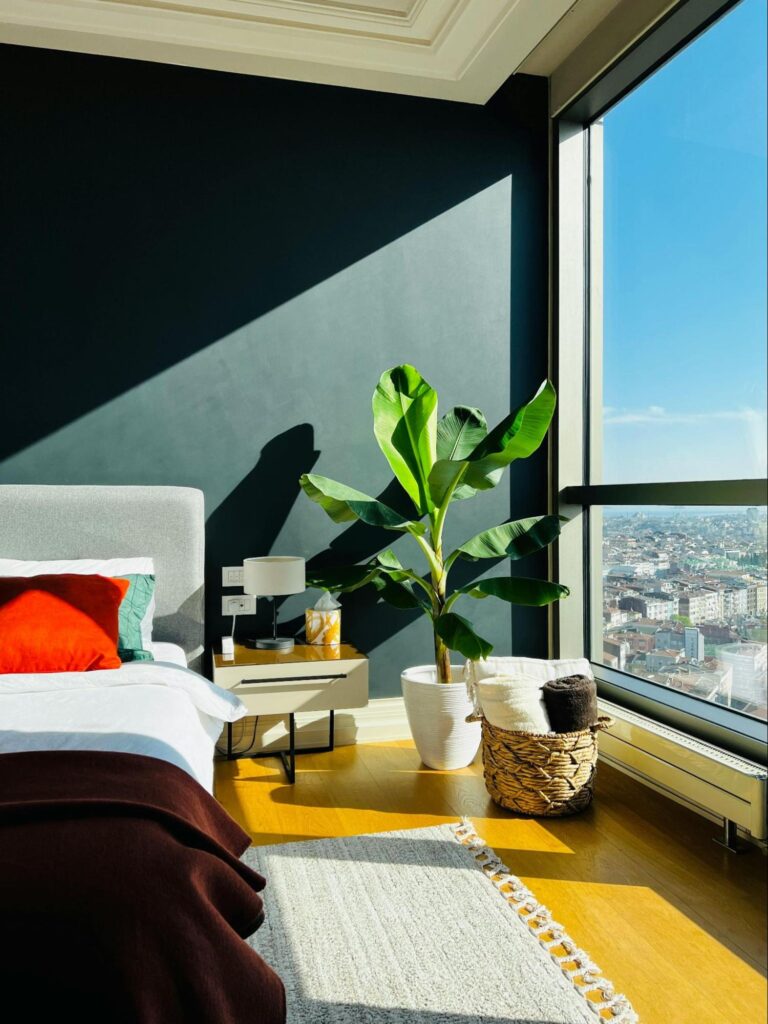If you’re considering applying window film to your windows, it’s essential to understand how much film you’ll need. Calculating the appropriate amount of window film not only ensures proper coverage but also helps you estimate the costs involved. In this article, we’ll discuss the various factors that influence the amount of window film needed and provide you with a step-by-step guide to measuring your windows accurately. Additionally, we’ll explore how to calculate the amount of film required and offer some useful tips for buying window film.
Understanding the Basics of Window Film
Before we dive into calculating the amount of window film you need, let’s take a quick look at the basics. Window film is a thin, adhesive film that is applied to glass surfaces. It serves multiple purposes, including UV protection, heat reduction, glare reduction, and privacy enhancement.
When it comes to window film, the possibilities are endless. Beyond the functional benefits, window film can also add a decorative element to your space. From frosted designs to intricate patterns, decorative window films offer a stylish solution to enhance the aesthetics of your windows. They can transform a plain glass surface into a work of art, creating a unique and personalized touch to your living or working environment.
Types of Window Film
There are various types of window films available, catering to different needs and preferences. Some popular types include:
- Solar Control Film: Reduces heat and blocks harmful UV rays.
- Privacy Film: Provides increased privacy by obscuring the view from the outside.
- Decorative Film: Enhances aesthetics and adds a touch of style to windows.
Each type of window film offers its own set of advantages, allowing you to choose the one that best suits your requirements. Solar control films not only help in maintaining a comfortable indoor temperature but also contribute to energy savings by reducing the need for excessive air conditioning. Privacy films, on the other hand, are perfect for areas where you want to enjoy natural light without compromising on privacy. They are a great solution for bedrooms, bathrooms, or offices where seclusion is desired.
Benefits of Using Window Film
The advantages of using window film are plentiful. Let’s explore some key benefits:
- Improved Energy Efficiency: Window film helps reduce heat transfer, keeping your home cooler in summer and warmer in winter.
- UV Protection: Window film blocks up to 99% of harmful UV rays, protecting your furniture, flooring, and skin from sun damage.
- Glare Reduction: Film reduces glare, making it easier to watch TV or work on computers without straining your eyes.
- Enhanced Privacy: Privacy films obscure the view from the outside, offering increased privacy without sacrificing natural light.
Aside from the practical benefits, using window film can also contribute to a more sustainable lifestyle. By reducing the reliance on artificial cooling and heating systems, window film plays a role in conserving energy and reducing your carbon footprint. This eco-friendly approach not only benefits the environment but also helps in cutting down on energy costs, making it a win-win solution for both you and the planet.
Factors Influencing the Amount of Window Film Needed
Several factors influence the amount of window film required for your project. Consider the following:
Size of the Window
The larger the window, the more film you’ll need. Measure each window individually to determine the precise dimensions.
When measuring the size of the window, it’s essential to account for any architectural features like mullions or transoms that may affect the amount of film needed. These additional details can impact the overall coverage required for your window film project.
Desired Level of Privacy or Sun Protection
If you’re looking for increased privacy or sun protection, you may need to apply window film to the entire surface of the window. Alternatively, you can choose to install film only in specific areas.
Consider the orientation of your windows and the amount of sunlight they receive throughout the day. South-facing windows may require more sun protection film to reduce heat gain, while windows facing a busy street may benefit from privacy film to shield your interiors from prying eyes.
How to Measure Your Window for Film
Accurate measurements are crucial when calculating the amount of window film required. Here’s a step-by-step guide to measuring your windows:
Tools Needed for Accurate Measurements
Before you begin, gather the following tools:
- Tape Measure: Choose a tape measure with both inches and centimeters.
- Notepad and Pen: You’ll need to jot down your measurements.
Additionally, having a level can be handy to ensure your measurements are straight and accurate. A step stool or ladder may also be necessary for reaching high windows.
Step-by-Step Guide to Measuring Your Window
Follow these steps to measure your window accurately:
- Start by measuring the width of the window from one side to the other. Measure at various points of the window and note down the smallest measurement.
- Next, measure the height of the window from top to bottom. Again, measure at multiple points and record the smallest measurement.
- If you need to apply film to a specific area of the window, measure that area separately using the same technique.
- Once you have all the measurements, add a few extra inches or centimeters to account for any potential mistakes or to ensure sufficient coverage.
Remember, it’s always a good idea to double-check your measurements before cutting the film to avoid any errors. Taking precise measurements will help you achieve a professional-looking finish and ensure the film fits your window perfectly.
Calculating the Amount of Window Film Required
Now that you have accurate measurements, let’s discuss how to calculate the amount of window film needed:
Understanding Film Roll Sizes
Window film is typically sold in rolls of various widths, commonly ranging from 36 to 60 inches. Check the size of the film rolls available to find one that suits your needs and reduces waste.
It’s important to consider the orientation of your windows when selecting the film roll size. For tall windows, a wider roll may be more efficient to minimize seams and ensure a seamless finish. On the other hand, for smaller windows or windows with intricate designs, a narrower roll could be more practical to reduce material wastage.
The formula for Calculating Window Film
To determine the amount of film required, use the following formula:
Total Film Area = (Width of Window + Waste Allowance) * (Height of Window + Waste Allowance)
When calculating the waste allowance, it’s recommended to add an extra 10-15% to account for any errors during installation or cutting. This buffer ensures that you have sufficient film to cover the entire window surface without running short.
Tips for Buying Window Film
Here are some essential tips to keep in mind when purchasing window film:
Where to Buy Window Film
Window film can be found at home improvement stores, specialty window shops, and online retailers. Research and compare prices and product descriptions to find the best option for your needs.
Home improvement stores often offer a variety of window film options, catering to different needs and preferences. Specialty window shops, on the other hand, may provide a more personalized experience, with experts guiding you through the selection process based on your specific requirements. Online retailers offer convenience and a wide range of choices, allowing you to browse through numerous brands and styles from the comfort of your home.
What to Look for When Purchasing Window Film
Consider the following factors when selecting window film:
- Quality: Look for reputable brands and opt for high-quality films that offer superior performance.
- Durability: Ensure the film is designed to last and won’t easily peel or fade.
- Installation Ease: Choose a film that suits your DIY skills or inquire about professional installation services.
When assessing quality, consider factors such as UV protection, heat reduction, and glare reduction. High-quality films not only provide these benefits but also offer long-term durability, maintaining their effectiveness over time. Durability is crucial, especially for windows exposed to harsh sunlight or extreme weather conditions. Look for films with scratch-resistant coatings and strong adhesives to ensure longevity.


